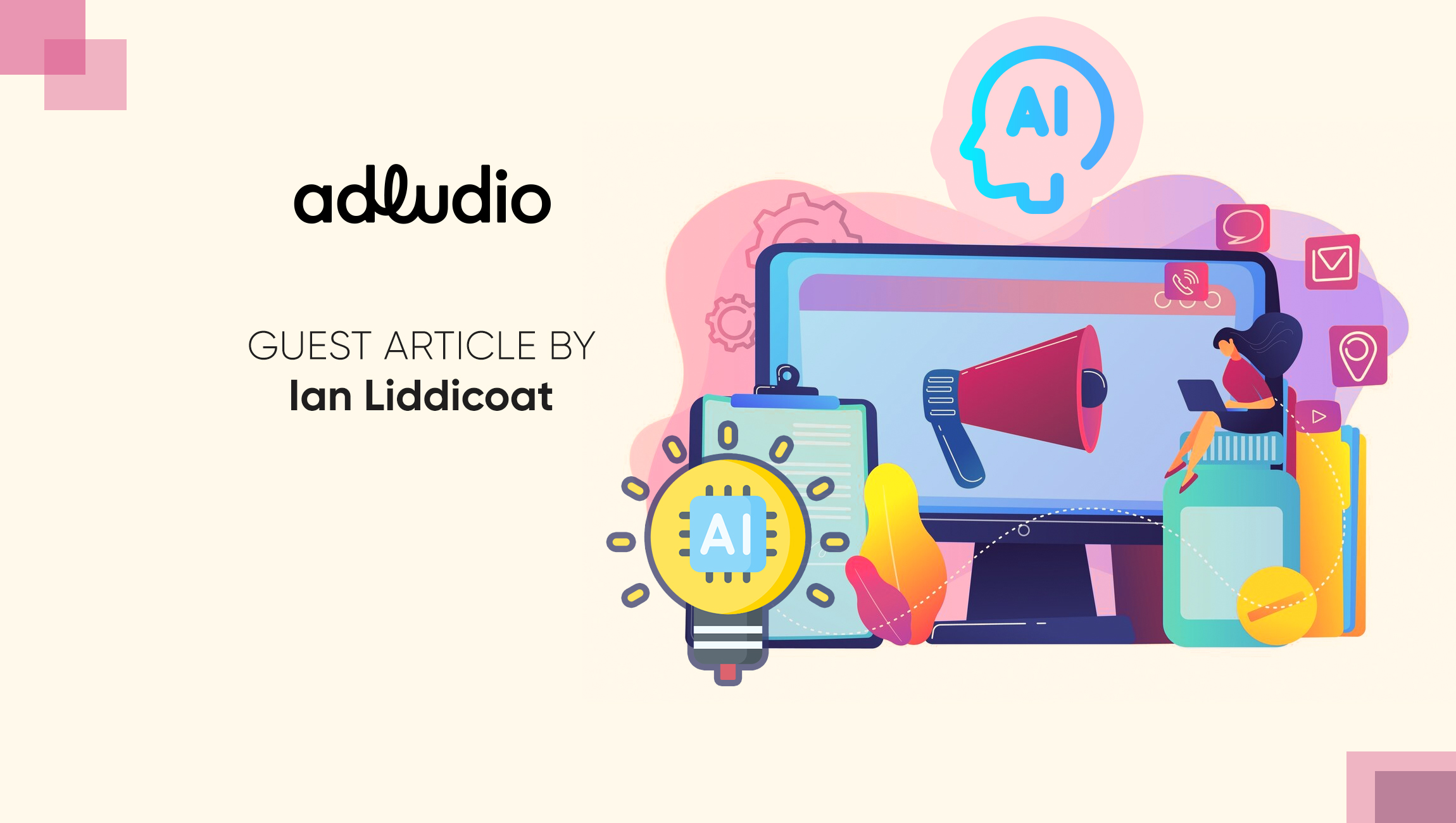When it comes to advertising, the ‘perfect campaign’ has been doggedly chased. Despite changes to multimedia placements and slot buying, the rise of interactive elements such as carousels and swiping, and in-vogue metrics that come and go, truly impactful creative design has remained at the pinnacle. Our industry still relies on the ethos that advertising campaigns live and die on whether the creative element is good enough. Brands still believe that the fight for user attention, brand engagement, and bottom-line benefits depends on whether they got their creative elements and targeting ‘right’.
Until now, creative advertising has been largely subjective, and the waters around what truly great creative looks like have remained murky. What if there was a way brands could definitively know whether they’ve got it right? And beyond this, recognize room for improvement and make these changes live, in real-time, without pulling the advert from its placements? The rise of AI is now providing unprecedented clarity into what great ‘creative’ really looks like.
The trouble with ‘testing’
As advertisers know, traditional routes into trying to define the most impactful creative elements of an advert has been a consistent point of contention. A/B testing is binary, taking stock of only a handful of different adverts and measuring effectiveness as a whole. It is unable to provide brands with deeper knowledge into why ‘A’ performed better than ‘B’ and whether ‘A’ is indeed a strong advertisement, or just better than its counterpart. Understanding that A/B testing is also time-intensive, costly, and vague when it comes to illustrating the ‘why’ behind various versions’ effectiveness, it’s no wonder the industry is primed for change.
Dynamic Creative Optimization (DCO) took A/B further. DCO allows advertisers to see campaign performance in real-time, and make improvements based on the objectives and KPIs they are trying to achieve. However, DCO takes a long time to reach statistical significance – enough time to spend valuable budget on an advert that was destined to underperform. Attempts to optimize, particularly in the wake of AI, are also too simplistic.
Advertisers require a way to intelligently optimize creative elements in real-time, based on campaign objectives, in a way that provides detailed insights and allows them to see exactly which creative elements work best.
Marketing Technology News: MarTech Interview With Catalina Salazar, Global Head @ Wolt Ads
AI can unlock the metrics that matter
Advertisers have never had one ‘tells all’ metric at their disposal, so assessing the true performance and ROI of an advert has been a difficult task. There’s an industry-wide recognition that some of the metrics measured on a daily basis are ineffective and don’t get to the root of whether an advertisement is good enough.
We must also consider the current economic climate, how this impacts the marketing function, and the overall influence this has on measurements and metrics.
It’s no secret a variety of geopolitical, environmental, and business dynamics, such as market saturation and lower average consumer spend, have instilled some degree of purse pinching from most brands. When this happens, the marketing budget is usually one of the first expenditures on the chopping block.
At this time, the pressure usually ramps up for marketers, who are usually directed to achieve greater results despite lower budgets for campaigns. In order to justify spend in the boardroom, marketers will usually ramp up the thoroughness of marketing reports. To do so, they increase metrics measurements in both granularity and volume. Unfortunately, traditional marketing metrics, such as attention or click-through-rates (CTRs) don’t contain enough correlation or influence over wider business objectives to be of significant value to departments and stakeholders outside of marketing. Once again, the advertiser is limited in showcasing the ‘value’ campaigns can provide.
Take Attention-based metrics for example. At best, they are an indication that an advert is ‘working’ to some degree; at worst it’s a vanity metric that tells us an advert has been seen, if only for a fraction of a second. There are also more sales-based KPIs such as Click-Through-Rates (CTR) and Cost-Per-Million (CPM). These metrics beg the question – have users genuinely expressed interest in a brand because of the advert themselves? Can eventual sales conversions be attributed to creative excellence? It’s been a long-term struggle for brands to get a definitive answer. Equally, with the depreciation of third-party cookies, the value of traditional media metrics, such as first-click, last-click, and viewability, is in rapid decline.
Forward-thinking advertisers have now set their sights on measurements of attention and degrees of engagement, which represent the opportunity to optimize with a deeper understanding of the advertisement’s strengths and weaknesses. Specifically, they’re asking how AI can be used to assess the individual effectiveness of creative elements before optimizing in turn.
AI brings a new dawn for creative advertising
When it comes to using real-time data insights to optimize creative elements (also in real-time) AI is the answer. Moving beyond generative applications that are still wrongly lauded as the technology’s most useful application, AI has revolutionized the advertising funnel and creative process.
For advertising campaigns, AI promises a new dawn for creative intelligence. Moving beyond binary or at the least restricted testing methods can be achieved through the application of AI, which can be used to gain actionable insights around a far greater set of factors.
Machine learning, in conjunction with AI handling the bulk of the automation processes, is a prime example. By creating advertising campaigns from a set of predetermined factors, such as historical brand performance and brand guidelines, creative campaigns can be executed and tested in the right way straight from the off. The most innovative adtech platforms contain large repositories of creative objects and insights can be implemented, with each tracked based on how users are reacting to them in real-time.
Using this model, from the moment a campaign is launched to the moment it concludes, advertisements can be analyzed in real-time and optimized accordingly. AI can also suggest and explain the context behind optimization options, once again providing an evidenced, data-backed approach to creative campaigns long-desired by advertisers. Significant advances in UX and automation have made this process extremely efficient for advertisers, meaning changes can happen fast and better performance can be achieved sooner while also absorbing less time and cost resources.
The interface or control of systems built through AI and ML is also being revolutionized with the use of prompt or natural language-based commands. This gives the industry a unique ability to apply AI in language that is familiar to them. This accessible, real-time optimization includes items such as the role of the logo, text, product shot, use of color, sound, sensory interactive elements, and call to action, and specifically how audiences are engaging with it. The era of true “creative intelligence” is upon us and this must be optimized for sales, long-term customer loyalty, and brand impact.
Driving true creative intelligence
AI will spearhead an evolution of creativity in digital advertising going forward and will be the key to driving real business outcomes. Brands must quickly accept and recognize the opportunities the technology holds for the way they engage with users across digital environments. Like most powerful technologies, this will spell a significant shake-up to the current ecosystem.
It will be interesting to see the rollout of AI across advertising and the far-reaching impact this has on the standard of creativity throughout our industry. Of course, AI is designed to complement the human element, and teams will have to work around how they effectively implement it within existing processes. As we move away from subjective creative impact and flimsy metrics, AI will shape the impact advertisers can deliver in the years to come. We should see the technology as a way to improve on our work, providing a data-driven, evidence-based approach to true creative intelligence.
Marketing Technology News: Where User Privacy Controls Meet An Evolving Advertising Landscape











